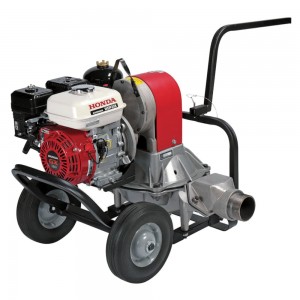 Honda’s water pumps are among the most durable and reliable pumps on the market, with a number of features that make them both easier to use and easier to maintain. Sometimes, however, even these top-of-the-line water pumps encounter a few operational problems that need to be fixed quickly. Troubleshooting is the best way for pump owners to figure out the exact cause of problems with the pump or its engine, especially during ignition or when beginning the water transfer process. By following a few troubleshooting guidelines at the first sign of a problem, equipment owners can prevent more serious damage and repairs, which might end up being quite costly if they aren’t caught early through one of these diagnostic procedures.
Honda’s water pumps are among the most durable and reliable pumps on the market, with a number of features that make them both easier to use and easier to maintain. Sometimes, however, even these top-of-the-line water pumps encounter a few operational problems that need to be fixed quickly. Troubleshooting is the best way for pump owners to figure out the exact cause of problems with the pump or its engine, especially during ignition or when beginning the water transfer process. By following a few troubleshooting guidelines at the first sign of a problem, equipment owners can prevent more serious damage and repairs, which might end up being quite costly if they aren’t caught early through one of these diagnostic procedures.
Before Getting Started, Keep Safety Guidelines in Mind
Troubleshooting the water pump should be taken just as seriously as actually using the equipment normally. The procedures required to diagnose unexpected problems often require direct interaction with the engine and key parts, which could pose serious safety risks. To reduce these risks, make sure that the pump’s engine has had time to cool off after a recent use. Work on the pump in a flat, open area that is properly ventilated, and make sure that there are no bystanders around while performing repair work. To maximize safety during repairs, wear protective gloves and eyewear to guard against injury from sharp, hot, or loose parts.
An Overview: Troubleshooting the Honda WDP30 Water Pump
For the most part, the WDP30 likely won’t require a large number of time-consuming repairs and diagnostic procedures. From time to time, however, wear and tear can take its toll on the engine and the pump, causing a few quirks during ignition or water transfer. When troubleshooting, be sure to have the right tools on hand and, optionally, have the right OEM parts available for a quick repair. OEM parts are the best way to ensure that the pump returns to working order with quality Honda materials that will stand the test of time. Here’s what to know in the most common troubleshooting scenarios.
1. Engine Won’t Start. Now What?
Engine ignition problems are perhaps the most common issue, simply because there are so many things that can go wrong when starting the water pump. Even small things, like forgetting to properly set the water pump’s fuel valve and engine levers, can cause ignition to fail for the most experienced power equipment user. If this problem has recently caused serious issues when using the water pump, there are a few things to check. In general, it’s a good idea to start with the simplest problems and work toward those that are more complex and may require the repair services of an authorized Honda technician.
First, check that the proper settings are in place to permit engine ignition. The ignition switch should be in the “on” position, and the fuel valve should be set its “on” position as well. The choke should be in the “choke” position, while the throttle lever should be set slightly to the left. If any of these settings are not properly set, the engine will fail to start or the water pump may lose power almost immediately, if it starts at all.
Beyond the pump’s basic settings, it’s also a good idea to check the pump’s fuel level. If the fuel tank is not full, or if the fuel is old, remove or add gasoline until ignition can proceed. After checking settings and fuel levels, attempt ignition again. Finally, check that the spark plug is properly installed and not covered in fuel. If ignition still does not proceed, the problem may be the result of a damaged carburetor or other, more serious problems. A Honda technician will need to take care of these problems.
3. What to Do if the Pump Won’t Process Fluids
In most cases, the pump’s failure to process fluids is caused by a clogged filter or pump. Check both of these key parts to make sure that they’re clear and able to properly pass water through the pump. While checking for clogs, it’s also a good idea to check for any damage to these parts that might be affecting the processing of water through the pump. If clogs and damage are not to blame, check that the suction hose and discharge hose are both properly attached to the equipment and that the pump has been primed prior to ignition. Finally, check the diaphragm to see if it has been damaged and whether or not this is restricting water flow. If none of these diagnostic procedures reveals a fixable problem, the pump should be examined by a Honda technician for more serious flaws.
Find OEM Parts for Honda Pump Repair at HondaLawnParts.com
A timely repair can keep the Honda WDP30 water pump in like-new condition for many years to come, especially if operators opt for OEM parts to fix common mechanical issues. When the time comes to find the best OEM parts for every repair, HondaLawnParts.com is the place to go. With an online search tool that narrows down parts by their part number, the pump model number or the engine model, it’s easy to find compatible replacements for the WDP30 pump and many other models on the market.
